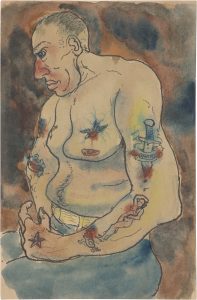New York Times: 3 Art Gallery Shows to Explore From Home
Galleries and museums are getting creative about presenting work online during the coronavirus crisis. Here are three shows worth viewing virtually.
July 1, 2020
By Roberta Smith

Richard Diebenkorn
Ongoing. Van Doren Waxter, vandorenwaxter.com
As an artist, Richard Diebenkorn (1922-1993) started young. His catalog raisonné begins with drawings he made in 1933, the year he turned 11: renderings of cowboys in strokes of dark, heavy pencil whose intensity goes beyond gun battles. “Paintings and Works on Paper 1946-1952,” the main exhibition at Van Doren Waxter, follows Diebenkorn moving quickly toward his first mature abstract style.
He had just been honorably discharged from the Marines, having dropped out of Stanford University to enlist (and to get some distance on his father, who wanted him to become a lawyer or doctor). Upon his return, he enrolled at the California Academy of Fine Arts (now the San Francisco Art Institute) — soon to be a hotbed of what would be called Abstract Expressionism — beginning a hectic six-year period of degree-earning, teaching and most of all, highly disciplined work in his studio. It was also a peripatetic time: Diebenkorn and his growing family moved from the Bay Area, to Albuquerque, N.M., to Urbana, Ill., before settling back in Berkeley, Calif. Among all this, grants enabled him to spend a year and then a summer in New York, eliminating any desire to live there.
An air of diligent experimentation prevails here, as Diebenkorn tries out various forms of European modernism and absorbs the latest developments among younger artists in both New York and San Francisco. Most of his energies are devoted to spiky geometries that hint variously at figures, buildings or weapons. In dark primary colors, they are sophisticated distillations of Cubism, De Chirico, Picasso and Robert Motherwell. Other works show Diebenkorn softening his colors and flattening his forms while adding bits of elegant improvisational drawing, taking crucial inspiration from the light, open spaces and paler tonalities of the Southwest. “Untitled (Albuquerque),” from 1951, and an untitled canvas from 1952, especially signal Diebenkorn finding his feet. They point toward the distinctively gentled Abstract Expressionist style, pursued primarily in Berkeley up to 1955, that yielded some of his greatest paintings.